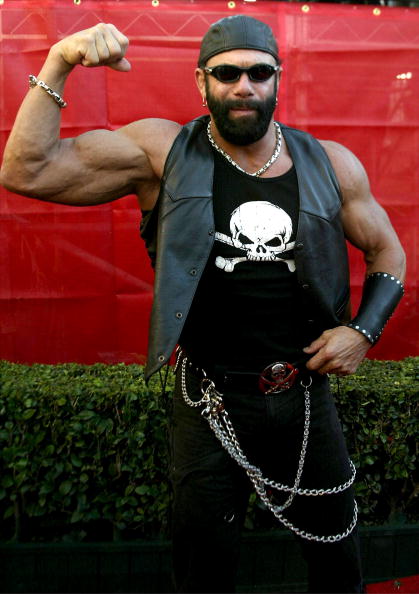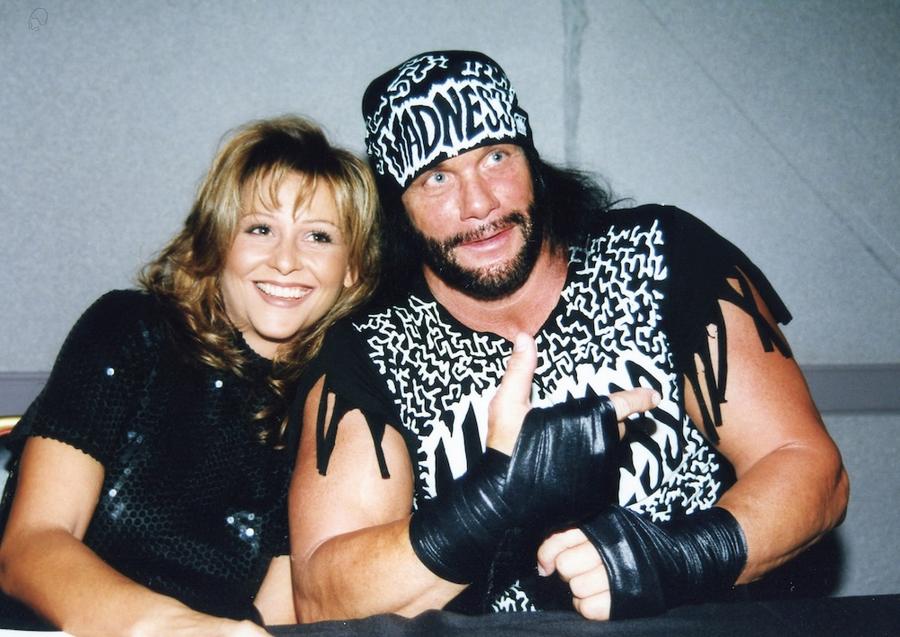What was Randy Savage's Net Worth?
Randy Savage was an American professional wrestler and actor who had a net worth of $8 million at the time of his death. Randy "Macho Man" Savage was one of professional wrestling's most charismatic and iconic figures, known for his flamboyant personality, raspy voice, and unforgettable catchphrase, "Oooh yeah!" Born Randy Poffo in 1952, Savage initially pursued a career in minor league baseball before transitioning to wrestling in the early 1970s, following in the footsteps of his father, Angelo Poffo. He rose to national prominence in the mid-1980s when he joined the World Wrestling Federation (WWF, now WWE), where his dynamic in-ring style and colorful character captivated audiences.
Savage's breakout came in 1986 when he won the Intercontinental Championship after a classic rivalry with Tito Santana. His legendary match with Ricky "The Dragon" Steamboat at WrestleMania III is still widely regarded as one of the greatest bouts in wrestling history. In 1988, Savage captured the WWF Championship at WrestleMania IV, launching a celebrated run as one of the company's top stars. His alliance—and eventual feud—with Hulk Hogan as part of "The Mega Powers" storyline became a cornerstone of late-'80s wrestling.
Known for his over-the-top promos and elaborate outfits, Savage was also inseparable from his real-life wife and on-screen manager, Miss Elizabeth, adding emotional depth to his storylines. After leaving the WWF in the mid-1990s, he joined WCW, where he became a multiple-time world champion and a central figure during the Monday Night Wars.
Savage officially retired from wrestling in the early 2000s and pursued other ventures, including acting and voice work. He passed away in 2011 at age 58 after suffering a heart attack while driving. He was posthumously inducted into the WWE Hall of Fame in 2015, honoring a career that left an indelible mark on professional wrestling and pop culture.
Early Life
He was born Randy Mario Poffo on November 15, 1952, in Columbus, Ohio. He was raised Roman Catholic and is of Italian and Jewish descent. His father was a well-known wrestler in the 1950s and 1960s who was also featured on "Ripley's Believe It or Not!" He was raised in Zanesville, Ohio, with his brother, Lanny, and attended Grover Cleveland Middle. He then attended Downers Grove North High School in the Chicago suburb of Downers Grove, Illinois.
Early Athletic Career
Before entering the world of professional wrestling, Randy Savage actually pursued a career in baseball. In 1971, straight out of high school, he was signed by the St. Louis Cardinals organization as a catcher. Over the next few years, he played in the minor league systems of both the Cardinals and the Cincinnati Reds, transitioning primarily to the outfield. His final season came in 1974, playing for the Tampa Tarpons. Though promising, his baseball career never advanced to the major leagues. During baseball offseasons, Savage began wrestling on the side, and by 1975, he fully shifted his focus to the squared circle.
Breaking into Wrestling
He debuted as "The Spider," a masked character inspired by Spider-Man, before adopting the ring name Randy Savage—a moniker suggested by his mother. His father, Angelo Poffo, a former wrestler himself, was deeply involved in his sons' careers and eventually launched International Championship Wrestling (ICW), a regional promotion based in the Midwest. Though ICW never gained national traction, it served as a proving ground for Savage, who developed a reputation for his intensity, agility, and charismatic presence.
After ICW folded, Savage joined Jerry Lawler's Continental Wrestling Association, where he worked closely with his brother, Lanny Poffo. Savage's unique style and compelling promos made him one of the most sought-after free agents in professional wrestling. In 1985, he signed with the World Wrestling Federation (WWF), then run by Vince McMahon Jr., and made his television debut on "Tuesday Night Titans."
Rise to Stardom in the WWF
Shortly after joining WWF, Savage introduced the world to his new manager, Miss Elizabeth (Elizabeth Hulette), who was also his real-life wife, having married in 1984. Their on-screen chemistry became one of wrestling's most iconic partnerships.
Savage captured the Intercontinental Heavyweight Championship in 1986, defeating Tito Santana in a high-profile feud. A year later, he delivered a legendary performance at WrestleMania III in his match against Ricky Steamboat—widely considered one of the greatest matches in WWF history.
In 1988, Savage won the WWF World Heavyweight Championship at WrestleMania IV, launching the era of "Macho Madness." He teamed up with Hulk Hogan as part of the "Mega Powers," but tensions between the two led to an explosive breakup and a main-event feud at WrestleMania V in 1989, where Savage dropped the title to Hogan after a 371-day reign.

( Frank Micelotta/Getty Images)
Later WWF Years and Feud with Ric Flair
After losing the championship, Savage transitioned to a more villainous persona and aligned with Sensational Sherri. He briefly retired in 1991, following a "Career Ending" match with The Ultimate Warrior at WrestleMania VII, only to return later that year as a color commentator and eventually re-enter the ring. In 1992, he reignited his in-ring career and began a memorable feud with Ric Flair, leading to another run as WWF Champion.
Savage remained with the WWF until 1994, helping define the company's golden era through both his wrestling and unforgettable promos.
WCW, TNA, and Final Matches
In 1994, Savage joined World Championship Wrestling (WCW), where he renewed his alliance with Hulk Hogan and became a central figure in the company's success during the Monday Night Wars. He won multiple WCW World Heavyweight Championships and feuded with top stars including Sting, Ric Flair, and Diamond Dallas Page.
After stepping away from the spotlight in the early 2000s, Savage made a brief return to the ring in 2004 with Total Nonstop Action Wrestling (TNA). He wrestled his final match in December of that year, officially closing the book on a 30-year wrestling career.
Slim Jim Endorsement
One of Randy Savage's most memorable off-ring achievements was his long-running endorsement deal with Slim Jim. Beginning in the early 1990s, Savage became the official face of the snack brand, appearing in a series of high-energy, over-the-top commercials that featured his signature growl and catchphrase, "Snap into a Slim Jim!" The ads became instant pop culture hits and helped solidify Savage's image as an intense, unpredictable force of nature. His partnership with Slim Jim not only boosted sales for the brand but also introduced him to a broader mainstream audience beyond wrestling fans. The campaign became one of the most iconic athlete endorsements of the decade, and Slim Jim remained closely associated with Savage's legacy, even paying tribute to him after his death in 2011.
Media Appearances
Savage also found success in entertainment outside of wrestling. He appeared in television shows like "Walker, Texas Ranger" and "Mad About You," and memorably portrayed wrestler Bonesaw McGraw in Sam Raimi's 2002 film "Spider-Man." He lent his distinct voice to animated series including "King of the Hill," "Dexter's Laboratory," and "Bolt."

Randy Savage and Miss Elizabeth get together in Charlotte, North Carolina circa 1998. (Getty)
Personal Life and Death
In 1984, Savage married Elizabeth Hulette, better known by her stage name, Miss Elizabeth. She was also a professional wrestler. The couple divorced in 1992. In May of 2010, Savage married Barbara Lynn Payne, his high school sweetheart. However, the following year, in May of 2011, Savage suffered a heart attack while driving in Florida with Payne. He became unresponsive while driving and crashed into a tree.
While it was initially reported that he had been killed in the collision, the autopsy found that his heart had been enlarged and he had advanced coronary artery disease. He had never been treated for any heart condition and seemingly did not know that he suffered from heart problems before his death.
Following his death, he was paid tribute by a number of print and television productions. WWE released a DVD documentary, "Macho Man: The Randy Savage Story," which featured interviews with some of the closest people in Savage's life. In 2015, WWE inducted him into the WWE Hall of Fame.
Real Estate
In 2007, Randy paid $1.1 million for a home in Seminole, Florida. He continued to own this home for the rest of his life.
/2021/09/randy-savage.png)
/2021/09/miss-elizabeth.png)
/2020/04/ric-flair.png)
/2023/05/diamond.jpg)
/2015/05/Gene-Okerlund.jpg)
/2016/11/GettyImages-93351549.jpg)
/2009/09/Brad-Pitt.jpg)
/2020/02/Angelina-Jolie.png)
/2019/10/denzel-washington-1.jpg)
:strip_exif()/2015/09/GettyImages-476575299.jpg)
/2020/06/taylor.png)
/2020/01/lopez3.jpg)
/2009/09/Cristiano-Ronaldo.jpg)
/2019/04/rr.jpg)
/2020/04/Megan-Fox.jpg)
/2009/09/Jennifer-Aniston.jpg)
/2018/03/GettyImages-821622848.jpg)
/2021/09/randy-savage.png)
/2021/09/miss-elizabeth.png)
/2016/11/21-Savage.jpg)
/2018/12/ric.jpg)
/2010/02/sav.jpg)
/2016/04/john2.jpg)
/2014/09/GettyImages-695785062.jpg)
:strip_exif()/2009/09/P-Diddy.jpg)
/2019/11/GettyImages-1094653148.jpg)
/2009/11/George-Clooney.jpg)
/2017/02/GettyImages-528215436.jpg)